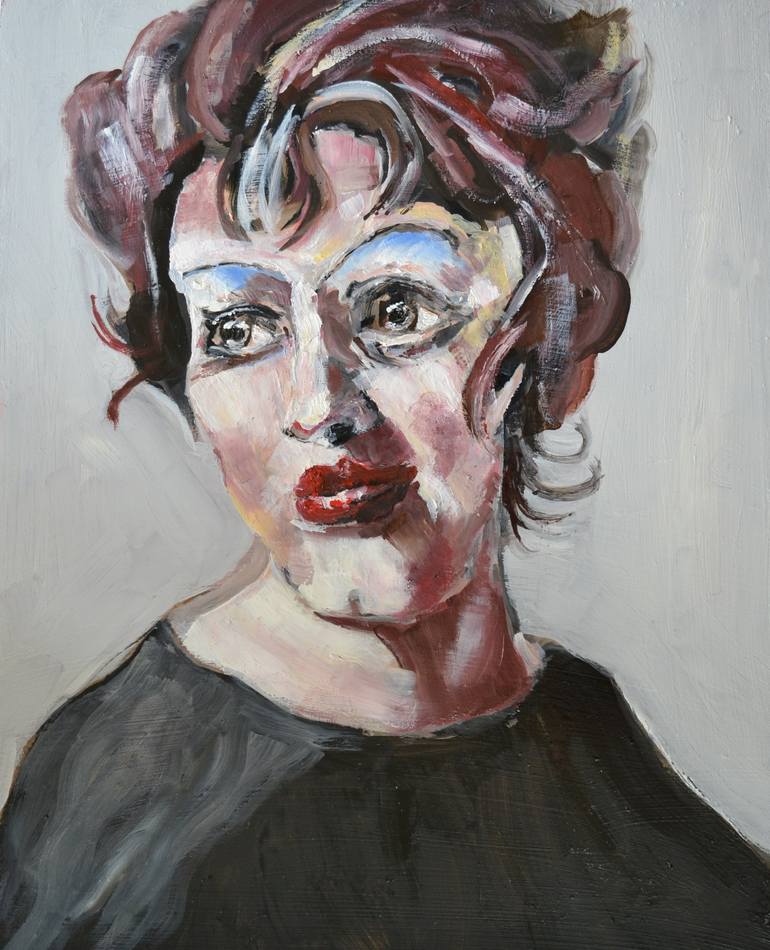



VIEW IN MY ROOM
Hatchjaw hallucination in the windup. Painting
Australia
Painting, Oil on Wood
Size: 15.7 W x 23.6 H x 0.8 D in
Ships in a Box
About The Artwork
Oil on panel It was as if the daylight had changed with unnatural suddenness, as if the temperature of the evening had altered greatly in an instant or as if the air had become twice as rare or twice as dense as it had been in the winking of an eye; perhaps all of these and other things happened together for all my senses were bewildered all at once and could give me no explanation. Not excepting even the credulous Kraus (see his Do Selby's Leben), all the commentators have treated de Selby's disquisitions on night and sleep with considerable reserve. This is hardly to be wondered at since he held (a) that darkness was simply an accretion of 'black air', i.e., a staining of the atmosphere due to volcanic eruptions too fine to be seen with the naked eye and also to certain 'regrettable' industrial activities involving coal-tar by-products and vegetable dyes; and (b) that sleep was simply a succession of fainting-fits brought on by semi-asphyxiation due to (a). Hatchjaw brings forward his rather facile and ever-ready theory of forgery, pointing to certain unfamiliar syntactical constructions in the first part of the third so called 'prosecanto' in Golden Hours. He does not, however, suggest that there is anything spurious in de Selby's equally damaging rhodomontade in the Layman's Atlas where he inveighs savagely against 'the insanitary conditions prevailing everywhere after six o'clock' and makes the famous gaffe that death is merely 'the collapse of the heart from the strain of a lifetime of fits and fainting'. Bassett (in Lux Mundi) has gone to considerable pains to establish the date of these passages and shows that de Selby was hors de combat from his long-standing gall-bladder disorders at least immediately before the passages were composed. One cannot lightly set aside Bassett's formidable table of dates and his corroborative extracts from contemporary newspapers which treat of an unnamed 'elderly man' being assisted into private houses after having fits in the street. For those who wish to hold the balance for themselves, Henderson's Hatchjaw and Bassett is not unuseful. Kraus, usually unscientific and unreliable, is worth reading on this point.
Details & Dimensions
Multi-paneled Painting:Oil on Wood
Original:One-of-a-kind Artwork
Size:15.7 W x 23.6 H x 0.8 D in
Number of Panels:2
Frame:Not Framed
Ready to Hang:Not applicable
Packaging:Ships in a Box
Shipping & Returns
Delivery Time:Typically 5-7 business days for domestic shipments, 10-14 business days for international shipments.
Handling:Ships in a box. Artists are responsible for packaging and adhering to Saatchi Art’s packaging guidelines.
Ships From:Australia.
Have additional questions?
Please visit our help section or contact us.
Australia
Paul Harris is an artist who lives and works in Brisbane, Australia. His main interest is portraiture and figurative painting. He has studied for several years at the Institute of Art at Windsor in Queensland. He has had several group exhibitions and is represented by The Norbertellen Art Gallery in Los Angeles. At present he is working out of The Cabin studio at Tarragindi, Brisbane, which is run by Jugglers Art Space. His aim is to give a sensual and tactile impression on the surface of the linen. The portraits draw upon a range of cultural influence such as Late Baroque, mid 20th century and contemporary style and horror. The artist wants the reader to be both enchanted and repelled by his work. He primarily works in oils and pastels and finds portraiture fascinating as a means of artistic expression. It is one of the oldest forms of art, the creation of life like images from coloured pigment. The contours and features of the face, and the skin tone and texture always present a compelling challenge to the artist. He likes to experiment with colour in his portraits and particularly with flesh colour which can provide a sensual element to the portrait. His aim is to project an image to the viewer of the painting and hope an exchange takes place between the viewer and the work. He wants the viewer’s imagination and thoughts to meet the work of art halfway.
Thousands Of Five-Star Reviews
We deliver world-class customer service to all of our art buyers.
Global Selection
Explore an unparalleled artwork selection by artists from around the world.
Satisfaction Guaranteed
Our 14-day satisfaction guarantee allows you to buy with confidence.
Support An Artist With Every Purchase
We pay our artists more on every sale than other galleries.
Need More Help?